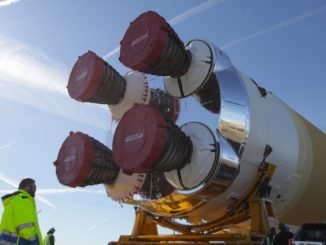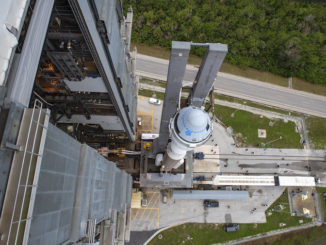EDITOR’S NOTE: Updated April 28 with new color image showing the Perseverance rover.
NASA’s Ingenuity helicopter flew farther and faster Sunday than the rotorcraft’s first two test flights in the Martian atmosphere, traveling the length of a football field while exceeding distances and speeds achieved during testing on Earth, officials said.
On Sunday’s test flight, the diminutive rotor-driven drone flew a distance of some 164 feet (50 meters) from its takeoff location, then returned to the same flat patch of Martian terrain for a controlled landing, logging around 330 feet of distance traveled in about 80 seconds.
Like Ingenuity’s previous two test flights, the helicopter took off at midday local time on Mars. Because the length of the Martian day is nearly 40 minutes longer than a day on Earth, the flight times are getting earlier in Earth time.
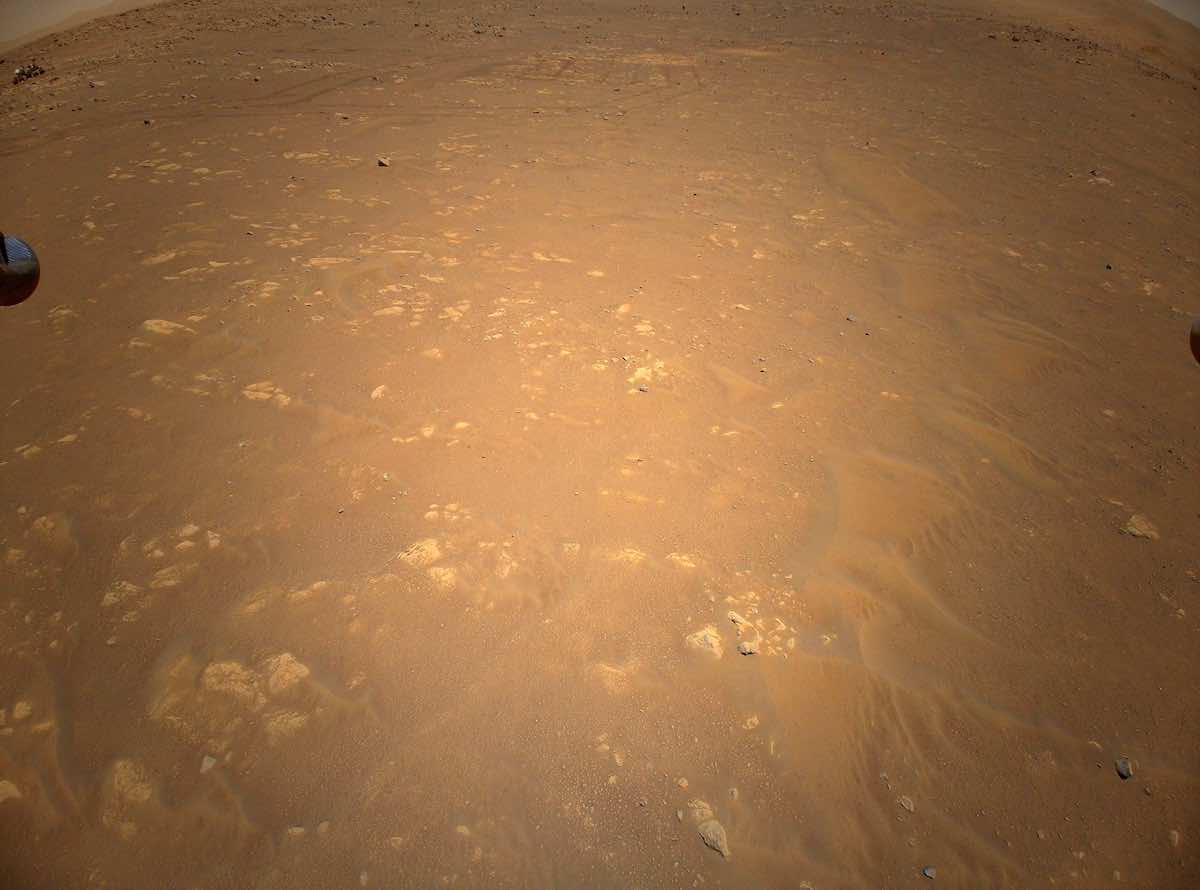
The helicopter’s third flight began at 4:31 a.m. EDT (0831 GMT) with a climb to about 16 feet (5 meters), the same altitude achieved on Ingenuity’s second flight last week. But instead of a lateral move of just a few feet, the helicopter flew downrange 164 feet and reached a top speed of nearly 4.5 mph (2 meters per second), according to NASA.
That’s farther and faster than the helicopter could fly inside NASA’s test chamber on Earth, which engineers used to simulate the rarefied carbon dioxide atmosphere of Mars.
Data confirming the successful flight arrived at NASA’s Jet Propulsion Laboratory in California at 10:16 a.m. EDT (1416 GMT) Sunday, following a relay route from the Ingenuity helicopter through a wireless base station on the Perseverance rover, then to an orbiting spacecraft high above Mars, which transmitted the telemetry back to Earth.
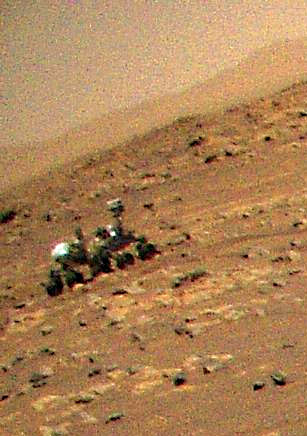
“Today’s flight was what we planned for, and yet it was nothing short of amazing,” said Dave Lavery, the project’s program executive for Ingenuity Mars Helicopter at NASA Headquarters in Washington. “With this flight, we are demonstrating critical capabilities that will enable the addition of an aerial dimension to future Mars missions.”
Engineers are analyzing the data as they develop plans for a fourth test flight in the coming days. MiMi Aung, Ingenuity’s project manager at JPL, said last week that engineers may attempt more daring long-range flights to push the helicopter to its limits.
Aung suggested she would like to see a flight traveling up to 600 or 700 meters, or more than a third of a mile. The helicopter uses a laser altimeter and a black and white camera to determine its altitude and position relative to the Martian landscape.
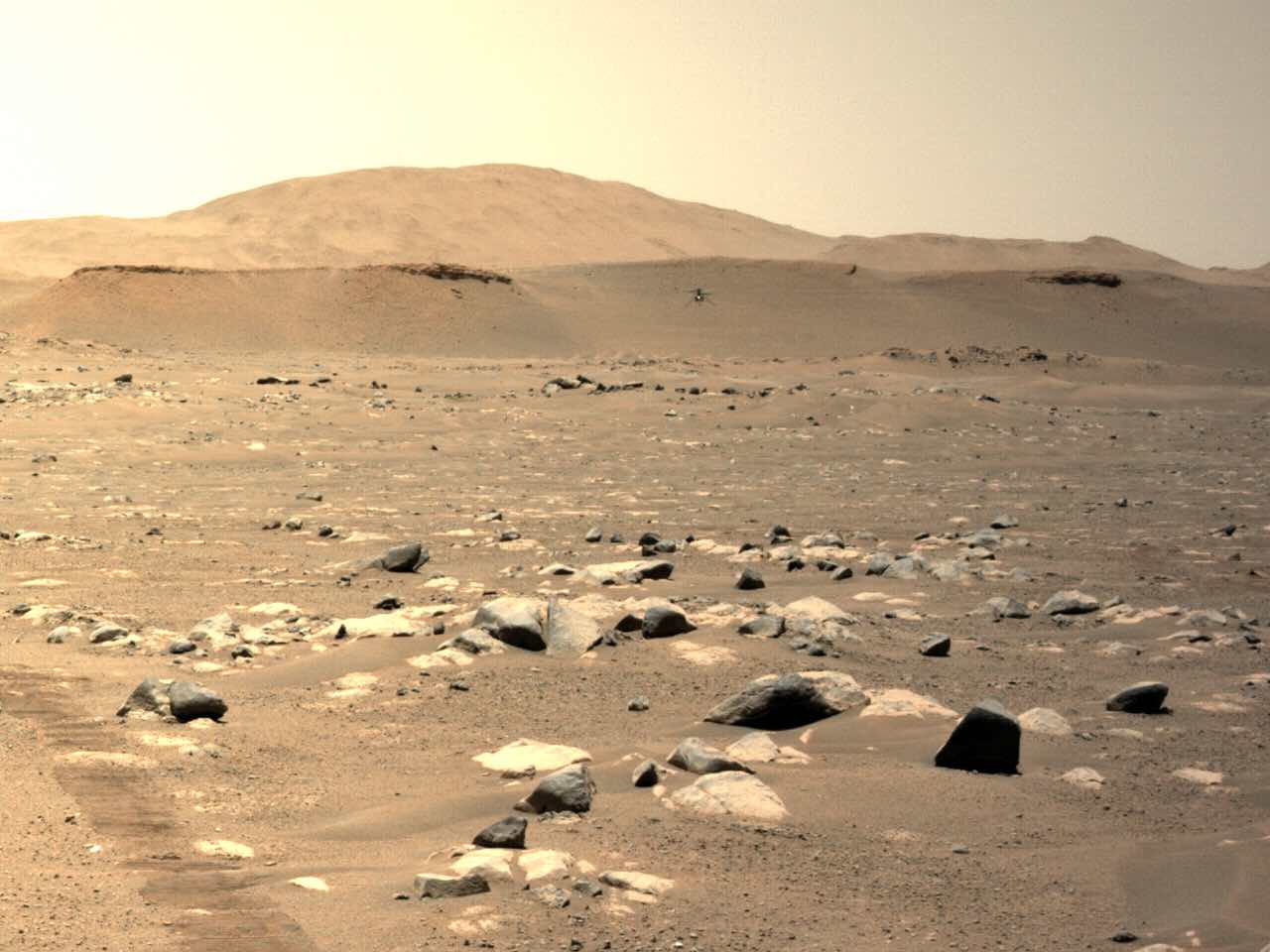
The helicopter also needs to stay in range of the base station on the Perseverance rover, which released the rotorcraft onto the surface of Mars earlier this month. Perseverance landed on the Red Planet on Feb. 18, with a primary goal of locating and sampling rocks that might contain evidence of ancient life.
The Ingenuity helicopter is a technology demonstration, and its mission is secondary to Perseverance’s top science goal. Managers set aside a month of Perseverance’s time to support the Ingenuity flight demonstrations.
The rover is parked about 211 feet (64 meters) from the helicopter’s makeshift “airfield,” which NASA dubbed Wright Brothers Field following Ingenuity’s first historic flight of an aircraft in the atmosphere of another planet.
Like the helicopter’s two prior flights, Perseverance’s mast camera system recorded video of Ingenuity’s traverse through the Martian atmosphere Sunday. This time, Ingenuity flew out of the rover’s camera field of view before returning for landing.
The helicopter’s body is about the size of a tissue box, with dual counter-rotating rotor blades spanning around 4 feet (1.2 meters) tip-to-tip. The craft weighed about 4 pounds in Earth’s gravity — equivalent to 1.8 kilograms — and weighs about 1.5 pounds in the weaker gravity of Mars.
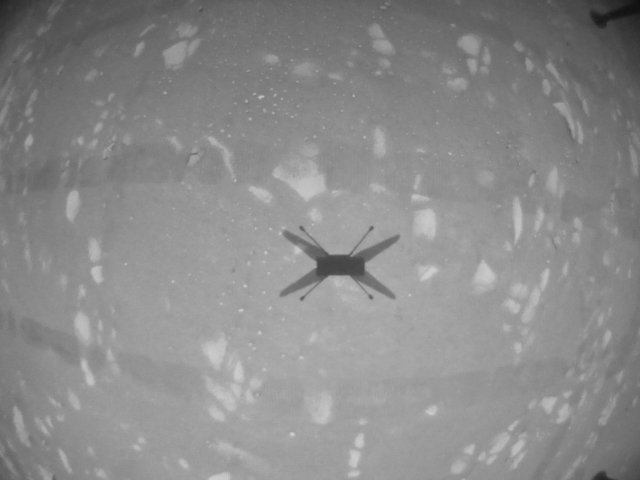
Ingenuity’s longer flights require the helicopter to take more pictures with its back and white navigation camera. The imagery feeds into the helicopter’s flight computer, which uses a software algorithm to make corrections to the craft’s trajectory up to 500 times every second.
“This is the first time we’ve seen the algorithm for the camera running over a long distance,” Aung said in a statement. “You can’t do this inside a test chamber.”
In order to handle the demands of autonomous flying, the Qualcomm processor on-board Ingenuity has at least an order of magnitude the computer power of the unit on the Perseverance rover, NASA officials said.
While the helicopter’s down-facing black and white camera tracks terrain features, a camera pointing toward the horizon snaps aerial photos in color.
Email the author.
Follow Stephen Clark on Twitter: @StephenClark1.

